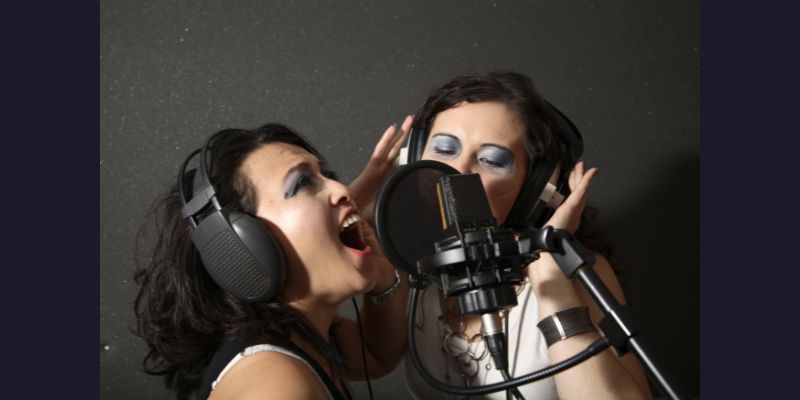When it comes to mixing tools, Reverb is often the unsung hero, quietly waiting in the wings when it should be taking a bow in the spotlight. Sometimes Reverb takes a backseat to our attention, despite its transformative power to really bring your tracks to life.
Join Noize London as we take a deep dive into the art of Reverb mixing. Our focus today is on how to use Valhalla Supermassive, a plugin that has rapidly gained a reputation for its unparalleled versatility and depth. In other words, this isn’t just another Reverb tool; it’s an intricate sound design instrument that offers a wide range of possibilities, from subtle spatial enhancements to expansive, atmospheric layers.
Stay tuned as we explore specific tips and techniques to unlock its full potential in your mixes.
But first! We want you to know about our competition where every couple of weeks you can submit your tracks to either Noize London or another big-time engineer to mix and master. Check out the link in the video description and follow our Instagram for recent updates on when you can have the chance to enter! Good luck!
Let’s get into it.
“Heal My Heart” by Flows
This is the user-submitted track we’ve chosen, and first we’re going to go over the time-stamped comments in Boombox. While Noize London has already mixed some of the parts in question, today we’re going to be focusing on the Reverb aspect, starting with drums.
How to Use Valhalla Supermassive on Drums
They already sound pretty great, but we want to really bring them to life.
We sent the drums to a Bus, opened up Valhalla Supermassive, and then selected the preset “Brass Blatt” from small Reverb. The mix is at 100%, a very short Delay at 15ms, and Warp at 100%.
The Warp affects the time between the delays which can make the echoes sound a little odd, even turning them into a Reverb. It’s giving us sort of a “pushed back” Room Reverb with a bit of a flanger feel to it. This should add some much-needed character to the drums.
So we’re using this as a Room Reverb to give the impression that the drums are all recorded in the same room. Occasionally when drums are taken from different sample packs they’ll have slightly different Reverbs on them, leading them to sound a bit disconnected.
We’ll mix this in, push it a little too far, and then draw it back to where it needs to be. It’s fairly subtle, but you can definitely hear the added room and sustain. However, we don’t really want that sustain; just the Room Reverb.
So we’ve sent the drums and the Room Reverb to the same Bus, and then on that Bus we’re using an SPL Transient Designer, adding Attack and taking away some Sustain. We’re also adding more punch and taking a bit from the release and Room on both the dry and also the wet signal together.
This allows us to hold onto that tight, upfront feel while adding a bit of character.
How to Use Valhalla Supermassive on Synths

Here we’re going to add a more obvious Reverb, dialing in the default settings: 19.8ms on the Delay, 30% Warp, loads of Feedback, very little Density, and Mix all the way to 100%. This is all for a medium-length Reverb by the way, about 1-2 seconds long.
Our sound already has some Side Chain on it, but we’re going to add a little more of this feeling by adding it to the Reverb as well. This Reverb really adds a lot of character without drawing too much attention to itself.
One thing we love about the Valhalla Supermassive is how adjustable the parameters are. It can do a lot, and very easily. It can also make your sounds wider.
Adding Width
In our example we’ve loaded up the preset called Synth Wider (Echoes > Synth > Synth Wider). The Mix is at 100%, and we’ve dialed it in to give the synth a little more width and give it some lift.
You’ll notice in the video that we always dial in too much, and then back it off until it sounds right, always listening in context with the rest of the parts on our track.
Vocal Reverb

The vocal is a little choppy (which we kinda like actually), but the goal is to find out how to meld all those parts together into a more cohesive sound without making it too obvious.
First we set up Valhalla at 100% with no Feedback, no Warp, etc. We’re trying to get it as clean as possible but with a 30-second Delay. This is to create some Pre-Delay like you may use on a Reverb. There’s no Pre-Delay on the Supermassive so we had to do it with a separate instance of Supermassive first in the chain.
We also added a Reverb preset in Valhalla called “80s Space Verb.”
OTT
This is another plugin that we really enjoyed adding after Reverbs. Why? Because it effectively extends the tail of the Reverb in a bit of a superficial way, which we like for its contemporary sound.
The track we have in our example is very Classic House, but it’s worth it to invite some more contemporary elements to make it a bit more unique and interesting. The OTT smoothes it out some. And also take note that we’ve brought down the high frequency dial by a lot. This is because OTT has a tendency to enhance the higher frequencies too much, to the point where it starts to sound a tad brittle and harsh.
When the high frequency dial is turned up too much, it takes away some of the vocal and can sound distracting. We definitely don’t want the Reverb to distract from the overall tone of the music. We want it to gel nicely to the original vocal.
Compressor
We wanted some Side Chaining to the vocals. The Compressor is on the vocal and then feeding the vocal into the Compressor so that it reacts to the vocal signal.
Anytime the dry vocal is prominent or increases in volume, the Compressor will duck the Reverb and reduce the volume. The Reverb becomes more apparent in the empty spaces without getting in the way of the vocal when it’s dry. That helps create the “glue” to meld those gaps together.
* * *
We’re now going back to the artist’s notes on Boombox, specifically the transition into the drop. Here, we don’t necessarily think the chords are too loud because there’s not much else going on, so they need to still sound prominent. Otherwise, it won’t sound like there’s much there at all.
However, we felt the chords going back into the drop from the end of the breakdown weren’t doing a whole lot. Listen to what Noize London did here in the video. He’s added a nice effect which sounds very cool with the Valhalla Supermassive.
First, we have the Mix increasing exponentially. Because it’s on the channel rather than on a Send, it compromises the dry signal so we’re losing a little of that dry sound and just starting to detect the affected one.
Right before the drop, we can hear that pitch bend down. This is achieved by increasing the Delay milliseconds. This is much like slowing down a vinyl record, giving it the effect of decreasing in pitch. As it decreases in time, it decreases in its tuning as well. It’s a pretty easy way to create that great tape-stop effect.
Lastly, we used the low cut within the Valhalla Supermassive to create a filter-style effect rather than just adding another EQ afterwards. By cutting out the low frequencies, we’re able to thin out these parts of the synthesizers so when they come back in, it’s not only dry, but has that low to mid gravity behind it.
From here we can hear everything cut back into its dry, original self.
* * *
Much thanks to Blair Stuart (Flows) for providing the track! Links to Blair and Boombox are provided in the video description. And don’t forget that you also have the chance, twice a month, to have Noize London or another experienced engineer mix and master your very own track for FREE!

